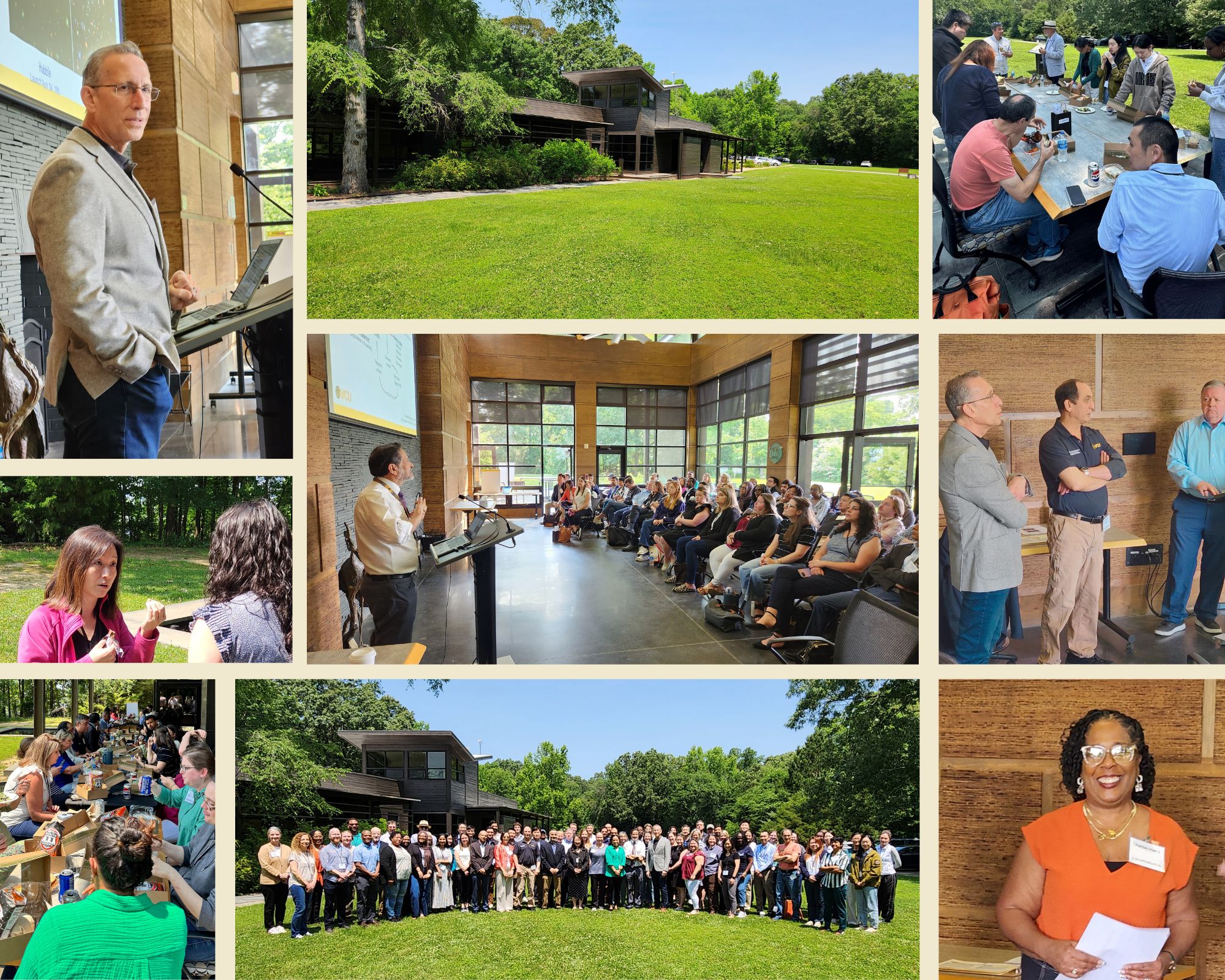Sharing the vision at Institute’s first research retreat
Director sets out ambitious plans to ’take over the world’ of hepatology

By A.J. Hostetler, Communications Director
Stravitz-Sanyal Institute for Liver Disease and Metabolic Health
“We need to rethink the entire approach to hepatology. What’s the big thing you’re going to solve?”
This call to action by Director Arun Sanyal, M.D., to look beyond professional roles (and even the liver) set the tone for the Institute’s first research retreat.
On the banks of the James River at Virginia Commonwealth University’s Rice Rivers Center, roughly 80 members of the School of Medicine faculty, the Institute, trainees, CRCs and administrative staff contemplated this question as they were presented with the vision for patient-centric research on this central, essential metabolic organ.
The daylong retreat was organized by Chief Scientific Officer Saul Karpen, M.D., Ph.D.
The Stravitz-Sanyal Institute (SSI) was founded three years ago with a $104 million gift by R. Todd Stravitz, M.D., a hepatologist in VCU’s Department of Internal Medicine and former medical director of liver transplant at VCU Medical Center. Its mission is to promote liver learning and translation of scientific discovery to improve liver-related health by radical innovation and integration of education, research, technology and clinical care. Its faculty draws from the clinician-researchers on the VCU Health System hepatology staff.
“Research saves lives, millions at a time,” Sanyal told the retreat participants. “We have a very ambitious plan to take over the world” of research of liver disease and treatment and education and training.
Ink 1, Shape“We are going to be filling the gaps in our understanding of liver disease, increase available treatments and work to improve patients’ lives with Stravitz-Sanyal Institute research,” Karpen said. He described how the Institute is going to “catalyze a liver revolution.”
“We really need to have an ‘inter-organ’ mindset,” Karpen said. “Liver-centric, not liver-exclusive.”
Expanding the lens of liver disease research with innovative technology
Chief Clinical Officer Richard Sterling, M.D., provided an overview of the institute’s wide-ranging efforts in clinical research, from MASLD to PSC to hepatitis to biliary atresia, as well as organ transplantation.
“There’s almost no liver disease for which we don’t have a clinical trial,” Sterling said, referring to the 56 clinical research studies underway in FY 2025, across 11 investigators.
“It’s clear that the transformative gift from Dr. Stravitz is well on its way for the SSI to be the leader in liver and metabolic health research.”
Ink 4, ShapeInk 3, ShapeLeaders of the Institute’s biorepository and biomedical data science shared how the goal of having every patient interact with the biorepository will result in detailed, multilayered maps of molecular and cellular changes in liver disease over time. This “Liver Atlas” will enable investigators to “answer new questions with unprecedented power,” said Stephen Hoang, Ph.D., the Institute’s data science director.
Additionally, SSI’s imaging core could open as early as next summer with state-of-the-art equipment able to image multiple organs simultaneously as well as visualize physiological processes not previously possible, including metabolism, inflammation and fibrosis
“We will be looking at the whole human body through the lens of the liver,” Sanyal said. “We will use the imaging core not only to understand what’s happening with the liver, but with the other organs as well.”
Looking at what he called the “crosstalk” that takes place among the human body’s major organs (liver, brain and heart) “will enable us to answer new questions with unprecedented power,” Sanyal said.
By pairing with an expansion of the existing pre-clinical imaging and radiochemistry capabilities, the SSI will facilitate translational science and allow for “one stop shopping” for researchers and industry partners, the director added. For example, pharmaceutical companies could hire the SSI and its imaging core and staff to study potential therapies for liver disease.
Hepatologist Amon Asgharpour, M.D. said he was glad the retreat brought together collaborators from across the MCV Campus.
“This retreat served as a wonderful opportunity to understand the breadth and depth of ongoing and future projects in SSI. It was nice to meet new team members and forge new collaborations,” he said.
Several VCU GI fellows were able to break away from clinical duties to attend.
“It was an inspiring experience, hearing Institute leaders share their vision. It energizes us to think bigger and bolder and appreciate the depth of the Institute’s collaborations,” GI fellow Vinay Jahagirdar. M.D., said.
Karpen expects the retreat to become a yearly event for the Institute, aiming to continue the momentum from this first retreat to an annual event that enhances the unique and robust clinical and research programs made possible by the people who work here at the SSI.